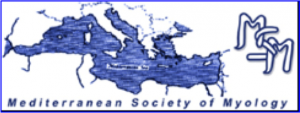We studied the consequences of the Nav1.4 mutation R1448H that is situated in the fourth voltage sensor of the channel and causes paramyotonia, a cold-induced myotonia followed by weakness. Previous work showed that the mutation uncouples inactivation from activation. We measured whole-cell Na+ currents at 10, 15, 20, and 25°C using HEK293 cells stably transfected with wildtype (WT) and R1448H Na+ channels. A Markov model was developed the parameters of which reproduced the data measured on WT and R1448H channels in the whole voltage and temperature range. It required an additional transient inactivated state and an additional closed-state inactivation transition not previously described. The model was used to predict single-channel properties, free energy barriers and temperature dependence of rates. It allowed us to draw the following conclusions: i) open-state inactivation results from a two-step process; ii) the channel re-openings that cause paramyotonia originate from enhanced deactivation/reactivation and not from destabilized inactivation; iii) the closed-state inactivation of R1448H is strikingly enhanced. We assume that latter explains the episodic weakness following cold-induced myotonia.






